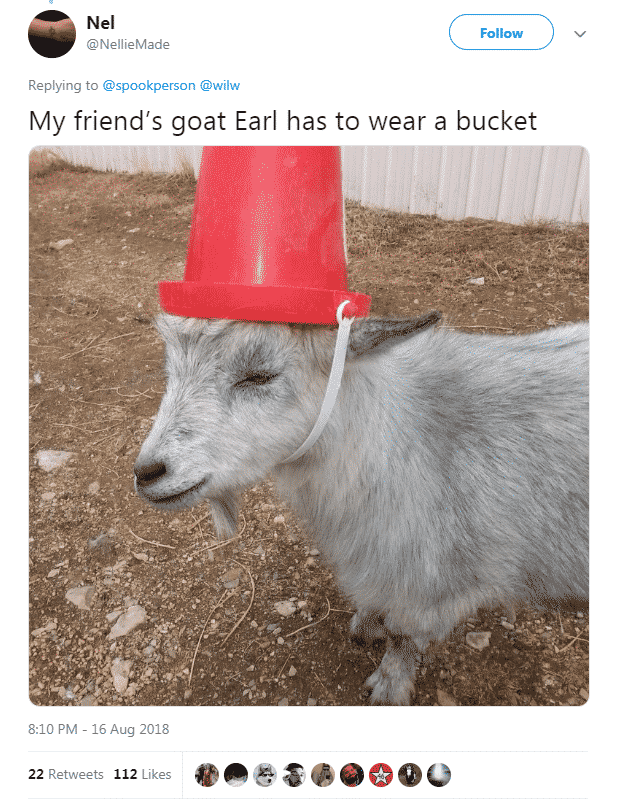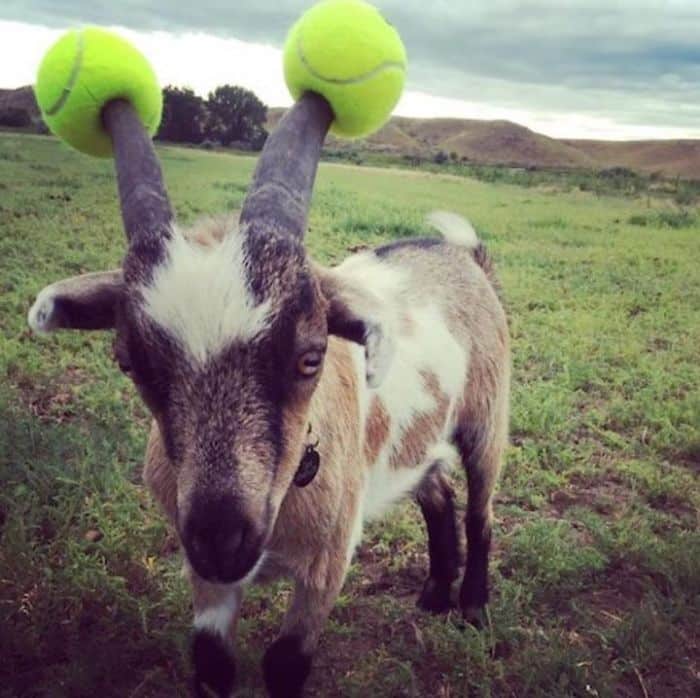Funny
These Naughty Goats Wearing Pool Noodles On Their Horns Are Absolutely Adorable
- Goats can sometimes go overboard with their playfulness and end up hurting other goats and people as well.
- Pool noodles are flexible tubes made of foam to hide the sharp points of a goat’s horns
- Other owners got more creative with sheathing the horns, using tennis balls, bucket, and socks
Goats are generally harmless animals. Basically, they spend most of the day roaming around, munching on grass, and playing with other goats.
Sometimes, however, they can go overboard with the playtime and their horns end up hurting fellow goats or the humans around them.

Now you couldn’t expect goats to tame down their playful nature. We just couldn’t train them to be well-behaved. And it’s so hilarious how some people came up with a good solution for the problem – by using pool noodles, which are flexible tubes (made of foam, probably), that can be slipped over a goat’s horns.

These pool noodles will prevent the sharp ends of the horns from causing injury to others.

See, goats can display aggressive behavior. They can bite, kick, and push things around. They end up hurting even their owners although this they may unintentional. It’s just goats being goats.
Some owners end up improvising ways to protect themselves from goat horns. They end up getting creative about it, using tennis balls, duct tape, buckets and other stuff you can think of.




Of course, it’s important to note that goats CAN actually be trained to lessen aggressive behavior.
According to Dummies, goats respond to clicker training, just like dogs.
“You need a clicker, which is a mechanical device that makes a click sound, and treats such as peanuts or flakes of cereal.“
“By combining the click with a treat, you reinforce that the goat is doing the right thing. You need to start by getting the goat to make a connection between the clicker and a treat. To do this, click the clicker and then give the goat a treat about 20 to 30 times. Your goat begins to associate the clicker with food and eventually responds to just the clicker so you don’t have to supply a treat every time.”
“After you’ve shown the goat that treats are tied to clicks, you can start training. You train by issuing a command (“Come,” for example), and then clicking as the goat does what you want it to do and giving the goat a treat after he completes his task.”
“Of course, the goat won’t follow your command without practice. If the goat doesn’t respond to the command or does the wrong thing, you can just say “wrong” or another word, and then try again. Always click as the goat does the behavior and then give the treat. If you give the treat first, you risk the goat being caught up in eating and not noticing the clicker.”
Meanwhile, you can have still fun watching them bouncing around while wearing these colorful tubes, buckets, or tennis balls until they learn to calm down.

-

 OMG8 years ago
OMG8 years agoMan Iced Neighbor Who Repeatedly Asked Him “When Are You Getting Married?”
-

 Interesting8 years ago
Interesting8 years agoPork Fat Is Officially One of the World’s Most Nutritious Foods
-

 News7 years ago
News7 years agoThailand Police Lay Down Their Weapons, Join Protesters To Fight The Power
-

 Interesting8 years ago
Interesting8 years agoScreen Dependency Disorder Can Damage Your Child’s Brain, Psychologist Warns
















